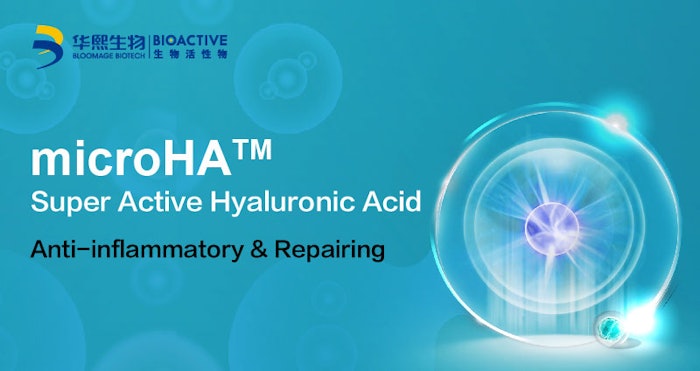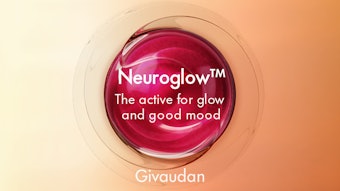
Hyaluronic acid (HA), the main component of extracellular matrix (ECM) and intercellular matrix (ICM) in human skin, has been recognized as a natural moisturizing factor and has been widely used in beauty and personal care products due to its outstanding biocompatibility, biodegradability, high hydrophilicity and viscoelasticity. Through the exogenous use of HA, the skin looks healthier and more beautiful.
Through in-depth studies, HA with low molecular weight (HA-LMW) has been granted more and more attention, as it has been proven to have additional biological activities. For a long time, HA-LMW was produced by traditional chemical methods, mostly requiring high amounts of acid and base to hydrolyze HA.
Bloomage Biotech, as a professional HA manufacturer, has devoted years of effort on research & innovation, development and production of HA-related raw materials. In 2011, Bloomage first developed low molecular weight HA and oligo HA through a globally patented Hyaluronidase degradation process. This process is environmentally friendly, and the purity of HA-LMW and HA-oligo obtained through such method is much higher than that derived through traditional chemical methods.
Bloomage Biotech’s Super Active Hyaluronic Acid (microHATM), launched with COSMOS certification, is developed based on the exact same patented enzymatic degradation process, and has a molecular weight of less than 5 kDa.
Due to its extremely low molecular weight, microHATM can quickly penetrate the epidermis and dermis to scavenge free radicals, reduce inflammation factors activity, repair damaged cells and protect the skin against sensitivity caused by various stimuli. microHATM can play a key role in re-balancing the skin’s health.
According to efficacy tests, microHATM significantly inhibits the release of TNF-α in keratinocytes initiated by UVB radiation (Fig. 1). In addition, it reduces the damage of SLS, as shown in a 3D skin model, by significantly inhibiting the release of IL-1α (Fig. 2), which indicates microHATM has excellent anti-inflammatory effects. It was also proven that microHATM has ultra-high antioxidant efficacy, and can reduce the intracellular ROS level of L-929 fibroblasts as shown via an ROS-scavenging capacity model (Fig. 3). Finally, microHATM significantly repairs damage in keratinocytes caused by UV and chemical factors.
%{[ data-embed-type="image" data-embed-id="61903b8d4ffe982fe8dfd96c" data-embed-element="span" data-embed-alt="Figure 1. Anti-inflammatory evaluation via inhibition of TNF-α release: microHA (0.125%, m/V) vs. dexamethasone (DX, 0.01%, m/V) Figure 2. Anti-inflammatory evaluation via inhibition of IL-1α: microHATM (0.125%, m/v) vs. Portulaca oleracea extract (PO, 0.25%, m/v) Figure 3. Antioxidant evaluation via ROS-scavenging capacity model of microHA (0.1%, m/m)" data-embed-src="https://img.cosmeticsandtoiletries.com/files/base/allured/all/image/2020/01/gci.bloom_ct2001_image1.png?auto=format%2Ccompress&fit=max&w=1280&q=70" data-embed-caption="Figure 1. Anti-inflammatory evaluation via inhibition of TNF-α release:<br> microHA (0.125%, m/V) vs. dexamethasone (DX, 0.01%, m/V) Figure 2. Anti-inflammatory evaluation via inhibition of IL-1α: microHATM (0.125%, m/v) vs. Portulaca oleracea extract (PO, 0.25%, m/v) Figure 3. Antioxidant evaluation via ROS-scavenging capacity model of microHA (0.1%, m/m)" data-embed-width="800" data-embed-height="424" ]}%Disclaimer:
The above paid-for content was produced by and posted on behalf of the Sponsor. Content provided is generated solely by the Sponsor or its affiliates, and it is the Sponsor’s responsibility for the accuracy, completeness and validity of all information included. Cosmetics & Toiletries takes steps to ensure that you will not confuse sponsored content with content produced by Cosmetics & Toiletries and governed by its editorial policy.










